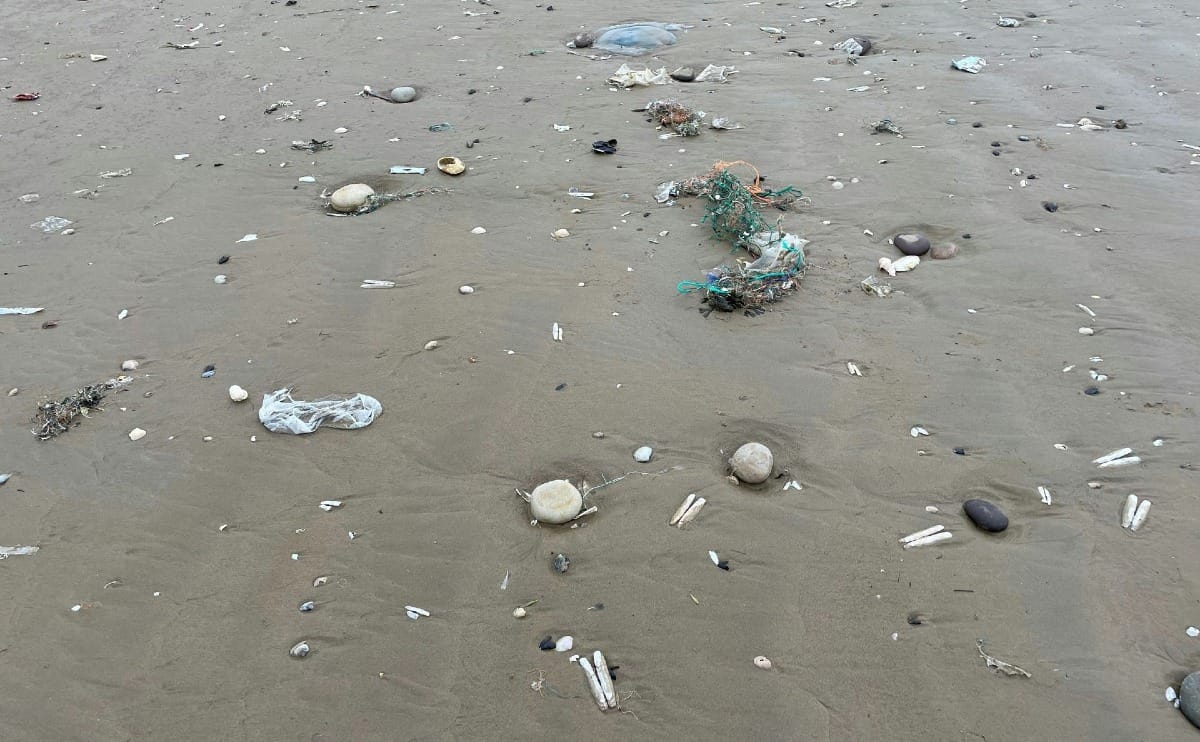In recent years, the ubiquity of microplastics has become a growing concern for scientists, environmentalists, and health experts alike. These tiny plastic particles, often invisible to the naked eye, have infiltrated our environment, our food, and even our bodies. But as we become increasingly aware of their presence, a crucial question arises: Are these microscopic invaders actually harming us?
Key Takeaways:
- Microplastics are now found everywhere, including in our food, water, and air.
- Research suggests potential health risks, but long-term effects are still unclear.
- Exposure to microplastics may lead to inflammation, oxidative stress, and other health issues.
- More studies are needed to fully understand the impact on human health.
- Reducing plastic use and improving waste management are key to addressing the problem.
What Are Microplastics?
Microplastics are tiny plastic particles less than 5 millimeters in size. They come from various sources, including the breakdown of larger plastic items, microbeads in personal care products, and synthetic fibers from clothing. These minuscule particles have become so prevalent that they're now found in the air we breathe, the water we drink, and the food we eat.
The Widespread Presence of Microplastics
Recent studies have revealed the alarming extent of microplastic contamination. These particles have been detected in some of the most remote places on Earth, from the depths of the Mariana Trench to the peak of Mount Everest. More concerningly, they've also been found in human blood, lungs, and even placentas.
A study published in 2022 discovered microplastics in human blood for the first time, indicating that these particles can travel through our bodies and potentially reach our organs[5]. This discovery has raised serious questions about the potential health impacts of long-term exposure to these synthetic materials.
Potential Health Risks
While research on the health effects of microplastics is still in its early stages, several studies have suggested potential risks:
- Inflammation: Some research indicates that microplastics may trigger inflammatory responses in the body[2]. Chronic inflammation is linked to various health issues, including cardiovascular disease and autoimmune disorders.
- Oxidative Stress: Exposure to microplastics has been shown to induce oxidative stress in some studies[2]. This imbalance between free radicals and antioxidants in the body can lead to cell and tissue damage.
- Metabolic Disorders: Some animal studies have suggested that microplastic exposure could contribute to metabolic issues, including insulin resistance and weight gain[4].
- Reproductive Health: There are concerns about the potential impact of microplastics on reproductive health, with some studies indicating possible effects on fertility[5].
- Cardiovascular Risk: A recent study found a potential link between the presence of microplastics in the body and an increased risk of heart attacks and other cardiovascular problems[9].
The Challenge of Studying Microplastic Health Effects
Despite these concerning findings, it's important to note that the long-term health effects of microplastic exposure on humans are still not fully understood. There are several reasons for this:
- Ethical Constraints: It's not ethical to intentionally expose humans to potentially harmful substances for research purposes[1].
- Long-term Nature: The effects of microplastic exposure may take years or even decades to manifest, making it challenging to conduct comprehensive studies[1].
- Complexity of Exposure: Humans are exposed to a wide variety of environmental factors, making it difficult to isolate the specific effects of microplastics[3].
Current Research and Future Directions
Scientists are working diligently to better understand the health impacts of microplastics. Some current areas of focus include:
- Improved Detection Methods: Researchers are developing more advanced techniques to detect and measure microplastics in human tissues[6].
- Animal Studies: While not perfect analogues for human health, animal studies provide valuable insights into potential health effects[3].
- Epidemiological Studies: Large-scale studies of human populations can help identify potential correlations between microplastic exposure and health outcomes[5].
- Nanoplastics Research: There's growing interest in studying even smaller plastic particles called nanoplastics, which may pose different health risks[6].
What Can We Do?
While more research is needed to fully understand the health impacts of microplastics, there are steps we can take to reduce our exposure and environmental contamination:
- Reduce Plastic Use: Opt for reusable items and avoid single-use plastics whenever possible.
- Choose Natural Fibers: When buying clothing, prefer natural fibers over synthetic ones to reduce microfiber shedding.
- Filter Your Water: Use water filters that can remove microplastics from your drinking water.
- Support Plastic Reduction Policies: Advocate for policies that reduce plastic production and improve waste management.
- Proper Waste Disposal: Ensure proper disposal of plastic items to prevent them from breaking down into microplastics in the environment.
Conclusion
The prevalence of microplastics in our environment and our bodies is a cause for concern, but it's important to approach this issue with a balanced perspective. While early research suggests potential health risks, more studies are needed to fully understand the long-term impacts on human health.
As we await more definitive answers, it's prudent to take steps to reduce our plastic use and exposure to microplastics. By doing so, we not only potentially protect our health but also contribute to the broader effort to address plastic pollution and its environmental impacts.
The story of microplastics serves as a reminder of the complex interconnections between human activities, environmental health, and human well-being. As we continue to unravel the mysteries of these tiny particles, one thing is clear: our relationship with plastics needs to change for the health of our planet and ourselves.
Citations:
[1] https://pubs.acs.org/doi/10.1021/envhealth.3c00052
[2] https://www.ncbi.nlm.nih.gov/pmc/articles/PMC10151227/
[3] https://www.undp.org/kosovo/blog/microplastics-human-health-how-much-do-they-harm-us
[4] https://www.aamc.org/news/microplastics-are-inside-us-all-what-does-mean-our-health
[5] https://www.nature.com/articles/s41591-024-02968-x
[6] https://www.wgbh.org/news/health/2024-06-27/what-we-know-about-the-health-effects-of-microplastics
[7] https://www.sciencedirect.com/science/article/pii/S0048969723075757
[9] Microplastics are everywhere, but are they harming us? - AZPM














Member discussion